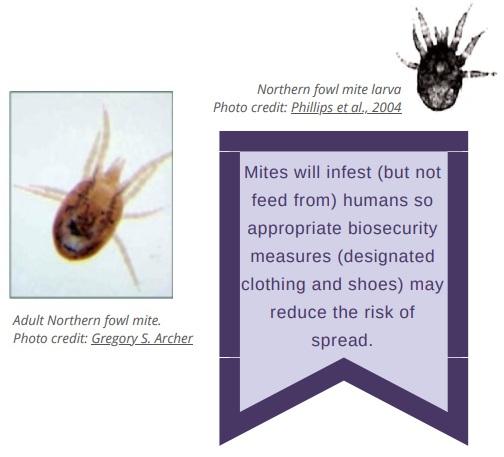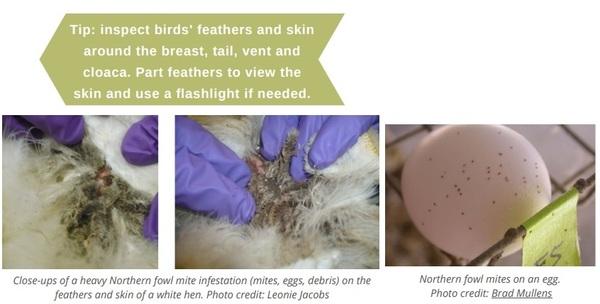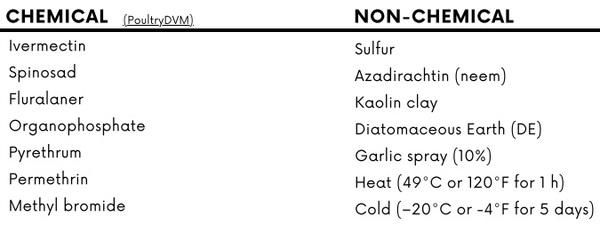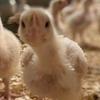Poultry parasites: Northern fowl mites




- Black crusted skin and feathers
- Thickening of skin and possible lesions and scabs
- Agitated birds with frequent preening, especially when birds are perching/roosting
- Blood spots or mites on chicken eggs
- Pale comb
- Anemia and mortality
- Inflammation and irritation at the site of the bite
- Reduced egg production (-10 to -15%)
- Reduced egg size
- Poor feed conversion (more feed needed for the same or worse production) (Murillo & Mullens, 2013; Kaufman et al 2000)
- Tip: Prevention is better than any treatment. The best way to prevent infestation is through biosecurity measures. More on biosecurity can be found here.

- For more pest management approaches, please see our previous newsletter on bed bugs here.
- More information on integrated pest monitoring and management (Murillo and Mullens) can be found here.
- Northern fowl mites live on birds, but can transfer to the environment or people
- Infestations can reach huge numbers, with 100,000 mites per bird
- Infestations can cause discomfort and distress in birds and can impact the bottom line (production)
- Early detection is key to manage infestations
- Biosecurity measures are the best approach to PREVENT infestation
Jacobs, L. and Persia, M.E. 2021. Maintaining the health of your home flock. https://www.youtube.com/watch?v=PMElWUIC8hw
Murillo, A. and Mullens, B.. 2013. Northern Fowl Mite (Ornithonyssus sylviarum [Canestrini and Fanzago]). https://www.veterinaryentomology.org/northern-fowl-mite
PoultryDVM. Northern Fowl Mites. http://www.poultrydvm.com/condition/northern-fowl-mites
Devaney, J.A. 1984. Progress on control of northern fowl mites on caged laying hens. https://www.sciencedirect.com/science/article/pii/030440178590055X
Dorrestein, G.M. 2009. Passerines. In: Handbook of Avian Medicine. https://www.sciencedirect.com/book/9780702028748/handbook-of-avian-medicine
Ivey, M.C. et al. 1984. Residues of carbaryl and two of its metabolites in eggs of laying hens treated with Sevin® for northern fowl mite control by dipping. Poult. Sci., 63 (1984), pp. 61-65
Kaufman et al. 2000. Pest Management Recommendations for Poultry. https://ecommons.cornell.edu/handle/1813/42385
Mullens et al. 2012. Northern fowl mite (Ornithonyssus sylviarum) control evaluations using liquid formulations of diatomaceous earth, kaolin, sulfur, azadirachtin, and Beauveria bassiana on caged laying hens. https://www.sciencedirect.com/science/article/pii/S1056617119305975
Wakenell, P. 2016. Management and medicine of backyard poultry. In: Current Therapy in Avian Medicine and Surgery. https://www.sciencedirect.com/book/9781455746712/current-therapy-in-avian-medicine-and-surgery












.jpg&w=3840&q=75)